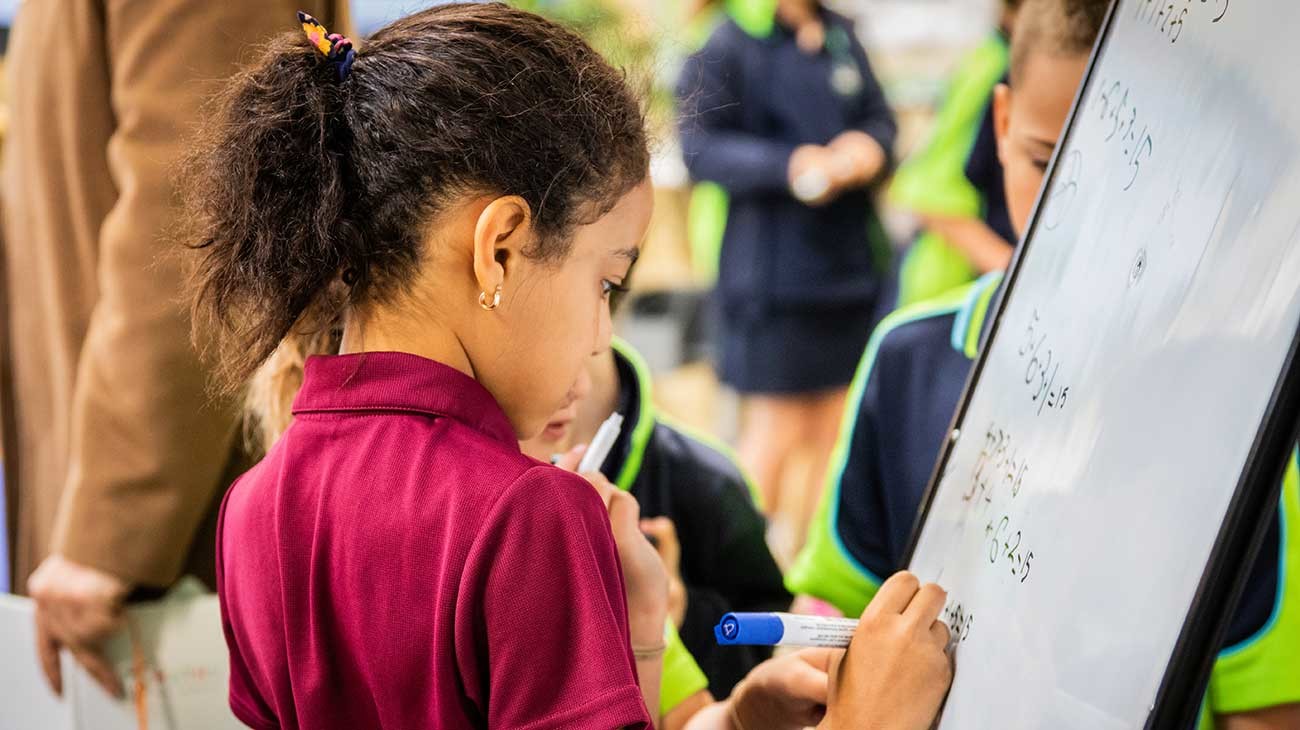Posted Friday, 11 July 2025
Wellard students build coding confidence
Students are building their skills in digital technologies, using pocket-sized computers to create everything from step …
Emily describes how to plan and facilitate a rich discussion phase with her students.

Hello, this is Emily Jansen, Year 3 teacher from Bungaree Primary School, back with my second Champions of Maths blog post. You can read my first one here.
Prior to beginning this program, I sat on the ‘traditionalist’ beliefs side of the spectrum.
I also work at an EDI school, which has a philosophy to ‘Teach First’. So, it was cognitively challenging for me to embrace the ‘launch – explore – discuss’ lesson structure of a ‘Connectionist’ teacher. Essentially, it was the total opposite of what I had been doing up until this point.
For this blog post I’m going to hone in on the discussion phase of the lesson format. We can think of the discussion being made up of several parts. It’s about students sharing carefully selected examples, it’s about facilitating opportunities for students to talk about these examples through talk moves (see Bec’s post here for further clarification), it’s about checking for understanding and finally (which took me a while to realise), to teach.
Initially I was relying heavily on Shyam’s support to ask concise, pertinent questions, but over time I became more proficient, so I’d like to share my top tips for crafting a good discussion.
Most importantly, stick with it and persevere because it will become easier to plan and facilitate a rich discussion phase with your students.
Would you like to continue a discussion on this topic with other educators? Join our Facebook group!
If you are interested in joining the Alcoa Maths Enrichment Program please fill out the enquiry form below and a Scitech representative will be in touch with you.
Upon clicking the "Book Now" or "Buy Gift Card" buttons a new window will open prompting contact information and payment details.